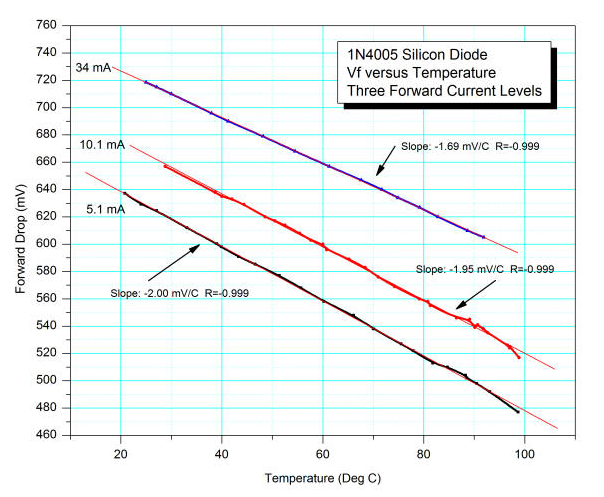So I've been messing with Bipolar Junction transistors lately and I'm trying to really nail the concepts of designing circuits with these things cause I want to start using them in some of my circuits and maybe design my own amplifiers.
I've read online that if you want to make a temperature stable BJT circuit the easiest way is to place a resistor in the emitter junction and choose the resistance such that it's voltage when your circuit is stable is ~1.4V. I understand how it can accomplish this by being able to buffer changes in current due to the resistor proportionally changing it's voltage in response to the change in current, which thus inversely affects the base current and thus returns the circuit to the stable state.
However, what if I were to use 2 silicon diodes instead of an emitter resistor? Assuming silicon diodes have a voltage drop of around 0.7V each, the diodes would have a bias of 1.4V just like when we were designing for the resistor. Would that maintain temperature stability like the resistor did? I've found conflicting reports online but I can't really see how the diodes could regulate changes in current besides just keeping a pretty stable voltage drop of 1.4V.
Here's an little circuit diagram of what I'm talking about, disregard the component numbers if that changes anything:

Now I do notice that in this example the voltage across the collector-emitter junction will be greater than half of the supply voltage.(assuming beta is ~100). I've read that there's a principle or something regarding this case,and I've seen a lot of people design their BJT circuits with the collector emitter junction to be half collector supply voltage. Does this half supply voltage thing also temperature stabilize the BJT?
Tl;Dr If your collector-emitter is at half supply voltage and there's no feedback/emitter resistors is the BJT temperature stable?


